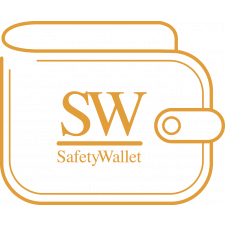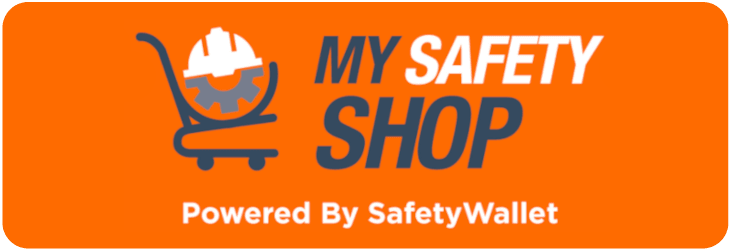Health and Safety Risk Assessment and Mitigation Measure Documents
Overview
Managing OHS, in line with the Occupational Health and Safety Act 85 of 1993, in the organisation is not only good for employees, but also shows positive impacts on the business and the employer.
Regardless of the size of the business, it is imperative for employers to effectively manage OHS. Employers are legally obligated to ensure a working environment that is healthy, safe, and free of harm for employees, visitors, and members of the public who enter the premises, or who may be affected by activities of the organisation.
OHS risk assessment and mitigation measure documents must therefore form part of the OHS management programme and plan of the organisation. Assessments must be carried out frequently and there must be a safety statement in place.
Risk Assessments
Hazard
Anything that has the potential to cause harm is considered a hazard for example chemical substances, moving machinery, vehicles, violence, and several others.
Risk
A risk is the chance or likelihood that someone will be harmed by the hazard. It also considers the severity of the harm and the number of people who may be affected.
Chance or Likelihood
Chance is a measure of how likely it is that an accident, incident, or injury will occur. When employees work safely, there is less chance that an incident will occur.
Severity
Severity refers to the measure of how serious an incident, accident, or injury could be because of unsafe working or an accident. Severity is influenced by the environment, the number of people who are at risk, and the control measures that are already in place to control the hazard.
Control Measures
Control Measures are the steps involved to remove the hazards or to reduce the risk of them causing harm.
Safety Statements
A safety statement is the written commitment of the employer to manage OHS in the business. An effective safety statement must include the following:
- OHS policy.
- Assessment results and findings.
- Names and job titles of responsible persons.
- Duties of employees and employees.
- Commitment to employee consultation and participation.
- Welfare arrangements.
- Plans and procedures for emergencies.
- Arrangements for vulnerable groups.
- Personal Protective Equipment policies and equipment.
- First aid and fire safety procedures, details regarding equipment and facilities.
- Accident and investigation procedures and reporting.
- Training records.
Purpose of Risk Assessments and Safety Statements
Legal Requirement
Employers have a legal obligation towards ensuring that employees have a healthy and safe working environment and the best way to ensure this, is to conduct assessments and to prepare a safety statement followed by implementing its contents.
OHS inspectors who visit workplaces will want to know how OHS is being managed. If they investigate an accident, they will subsequently scrutinise the assessments, safety statements, and the procedures and work practices.
Good for Business
An OHS compliant workplace contributes to an efficient business and the costs that come with accidents and occupational diseases in the workplace have potential to be significant, including:
- Salary costs for the replacement of employees and overtime payments.
- Productivity losses.
- Penalties and fees paid to COID.
- Retraining costs.
- Increases in insurance premiums.
Right thing to do
There is a lot of personal pain and loss that can be caused as result of workplace accidents and this should not be forgotten or overlooked. The consequences of workplace injuries or occupational diseases can be long-lasting and devastating, not only for the victim but for their family as well.
Employers have an ethical duty towards preventing this as every person is entitled to a workplace that is healthy and safe, allowing them to return home unharmed at the end of every working day.
Risk Assessment Process
There may not be a set guideline on how an assessment can be conducted, however, there are five basic steps that can be followed to ensure that the risk assessment is conducted effectively, and that all hazards are identified and addressed.
These steps are:
- Identifying all the hazards that have the potential to cause harm.
- Assessing the risks and determining their likelihood and severity.
- Deciding on the control measures according to the hierarchy of control, with significant risks addressed first and low risks addressed last.
- Recording findings of the risk assessment and ensuring that the risk assessment and control measures are communicated to all employees.
- Monitor and review of the risk assessment when there are changes to ensure that the control measures remain relevant or to determine whether additional controls are necessary.
Safety Statement Preparation
Employers must prepare a safety statement in which they specify how the health, safety, and wellbeing of employees will be secured and managed. The safety statement can be broken down into four sections namely:
- OHS policy which is the employer’s commitment towards providing a healthy and safe workplace.
- Safety arrangements and information pertaining to the employer’s approach and commitment to different aspects of OHS management.
- Forms and records.
- Risk assessments and the action list.
How does SafetyWallet support its subscribers?
SafetyWallet, in partnership with MAKROSAFE and OHS Online, ensures that subscribers can obtain the highest level of compliance with the OHS Act, all other Regulations, and more.
MAKROSAFE / SAFETYWALLET / MY SAFETY SHOP are all in Partnership.
Through the assistance and support in the OHS programme of the subscriber, SafetyWallet helps subscribers with the OHS risk assessments that must be conducted to ensure that subscribers are compliant in providing a healthy and safe working environment.
Click on the image below to find a SafetyWallet Solution that suits your business (Branch/Site specific) and get the benefits along with the subscription:
Keeping your workplace legally Health and Safety Compliant may seem like a daunting task. At MAKROSAFE, we have an experienced team of OHS experts available to assist in keeping your company Health and Safety Compliant according to South African Occupational Health and Safety Act 85 of 1993 and Regulations.
The MAKROSAFE Health and Safety Risk Control Package will assist you with your Risk Management Programme.
By signing up with our Health and Safety Risk Control Package, MAKROSAFE will assist you with your Risk Management journey.

-Health-and-Safety-Risk-Assessment-and-Mitigation-Measure-Documents-Banner-1.jpg)






Comments (2)
Control Measures are the steps involved to remove the hazards or to reduce the risk of them causing harm.
2022-10-07 14:06:04Dear Rubini Thank you for reading our bog and your positive feedback on comment... Follow this link to purchase one of our Risk Control packages: https://www.mysafetyshop.co.za/Shop/Category/Risk-Control
2022-10-10 09:53:32OHS policy which is the employer’s commitment towards providing a healthy and safe workplace.
2022-11-09 13:51:58Dear Aditya Thank you for your comment, I totally agree with you... The OHS policy which is the employer’s commitment towards providing a healthy and safe workplace.... Once implemented and maintained the employer will ensure that all loved ones will return home healthy and safe after work... Follow this link: https://www.mysafetyshop.co.za/Products/Creation-of-Health-and-Safety-Policy
2022-11-10 07:11:54